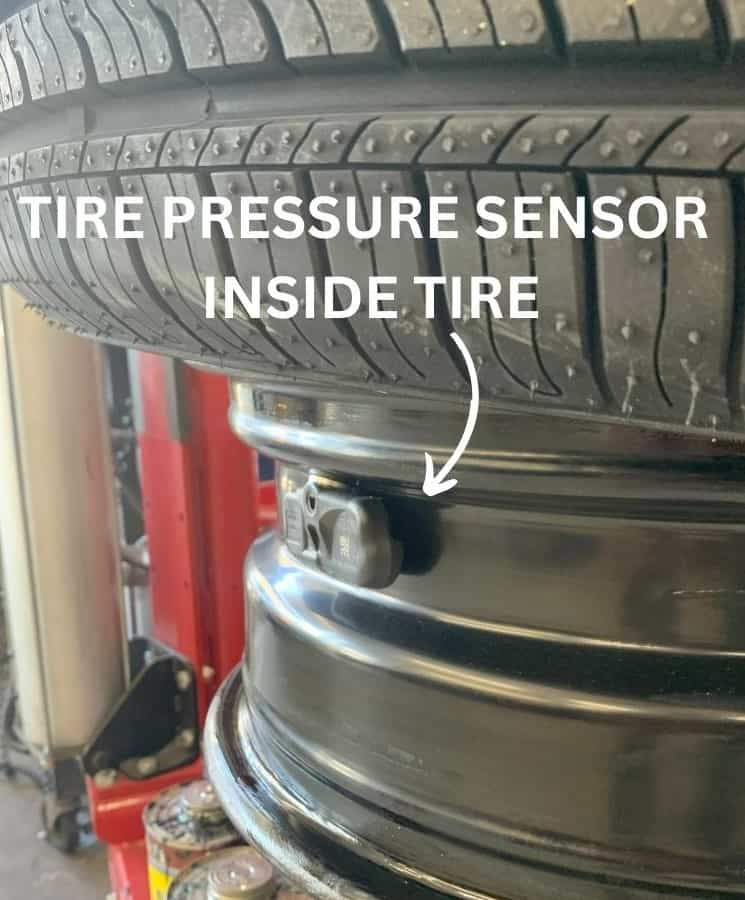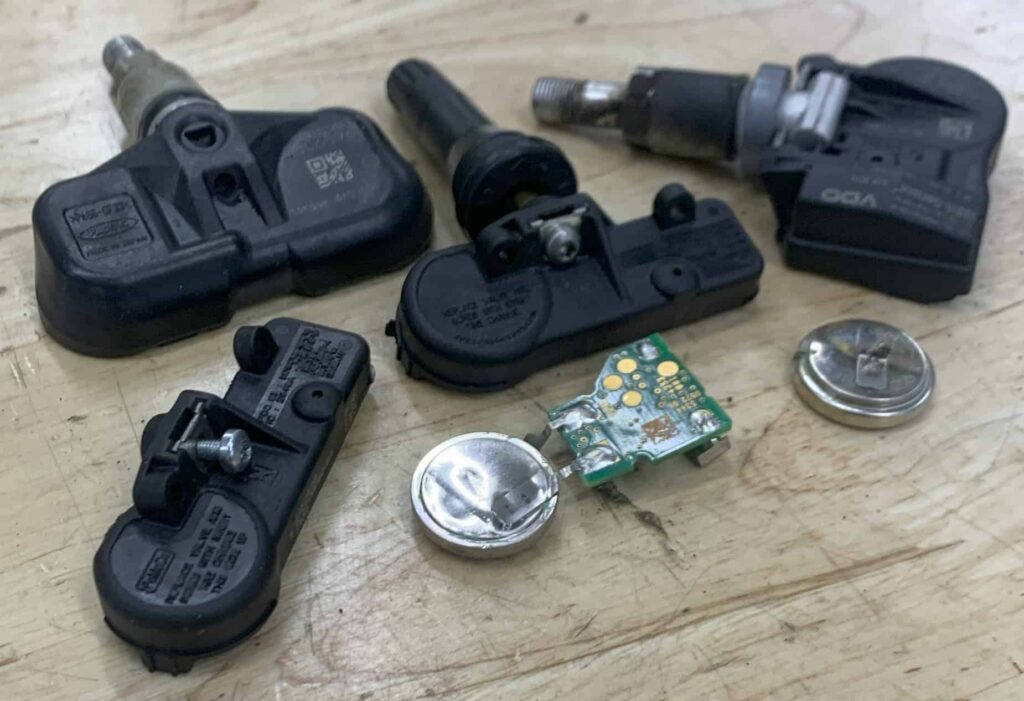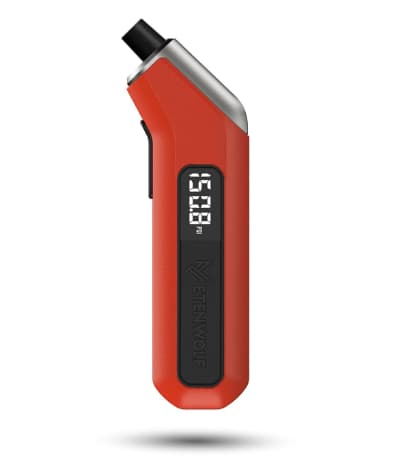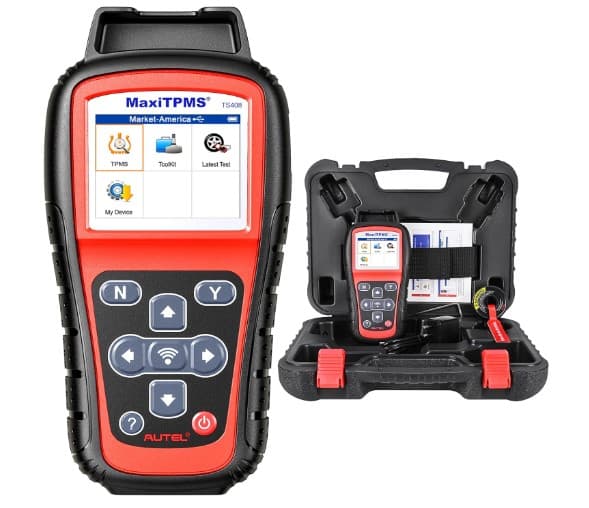How to Reset the Chevy Camaro TPMS
Ensure that all four tires are pumped up to the advised pressure values before they are warmed up.
Take the Chevy Camaro on a short drive, maintaining speeds over 25 Mph for at least 5 to 10 minutes.
Remember, there is no reset button for tire pressure on the Chevy Camaro.
Steps to Relearn the Chevy Camaro TPMS Without a Tool
After any tire maintenance on the Chevy Camaro, relearn the tire pressure sensors so the Camaro ECM can learn the new tire positions on the vehicle. Follow these steps to relearn the tire pressure sensors without a TPMS tool:
Pump up all tires to 40 Psi.
Without starting the engine, turn the key to the “on” position.
Access “Vehicle Information” through the “Menu” on the dashboard display, then go to the “Tire Pressure Menu.”
Press and keep the SET/CLR button pressed for a short duration. (trip button)
Confirm the relearning prompt by choosing “Yes” when the message appears.
Two horn beeps will signal the commencement of the relearning mode, and the message “TIRE LEARNING ACTIVE” will display on the DIC.
Begin with the tire at the Camaro’s driver side front and release air until you hear the horn beep. (gently press the valve core in)
Repeat the air release process for the front passenger, the rear passenger, and the rear driver’s side tires, waiting for a beep after each. Follow the process in this order.
Once you’ve completed the steps for all tires and heard the corresponding beeps, the process is done.
The Chevy Camaro tire pressure display will now show the tires new positions.
Turn the ignition off and adjust the tire pressures back to the recommended levels.
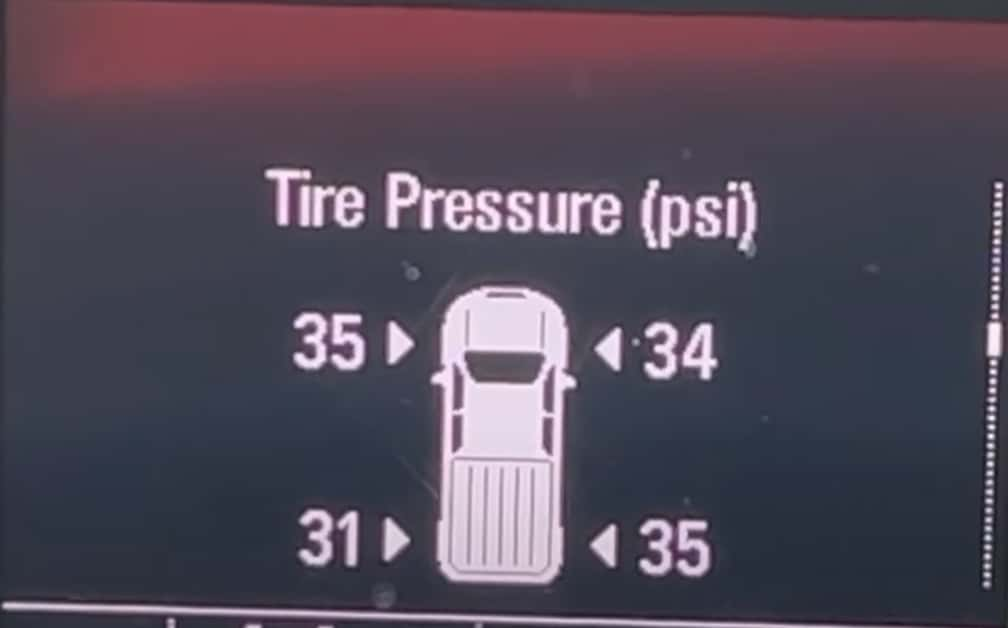

Steps to Relearn the Chevy Camaro TPMS With a Tool
Inflate every tire to 40 Psi.
With the controls on the steering wheel, scroll to the display that indicates the current tire pressures.
Press and hold the trip button found on the right side of the display.
A query will appear, “Are you sure that you want to relearn?”
Affirm by selecting “Yes” using the trip button.
You will hear two beeps from the horn, and the display will show “Tire Learning Active”.
Approach the front left tire with the TPMS tool, hold it near the valve stem, press the tool’s trigger button and wait for a horn beep.
Follow the same steps for the front right, rear right, and left rear tire in that order.
Confirm the tire pressure sensor relearn process has been completed by checking the tire pressure display for the tires newly learned positions.
Finally, adjust the Chevy Camaro tire pressures back to the recommended levels.
2023 Chevrolet Camaro Tire Pressures
TIRE SIZE | FRONT PSI | REAR PSI |
245/50R18 | 32 | 32 |
305/30R19 | 32 | |
325/30R19 | 32 | |
245/40R20 | 35 | |
275/35R20 | 35 |
What is the Chevy Camaro TPMS?
In the Chevy Camaro, the tire pressure monitoring system (TPMS) is designed as a safety mechanism to constantly track the air pressure in all four tires. This system includes four individual tire pressure sensors (one for each tire), a TPMS receiver module, and is integrated with the vehicle’s engine control module (ECM).
How Does the Chevy Camaro TPMS Work?
Chevy Camaro Tire Pressure Sensors: A tire pressure sensor is located within each tire of the Chevy Camaro.. These sensors are not visible externally and are fixed to the valve stem base. Each sensor is a small unit comprising a circuit board, a radio transmitter, and a battery, all encased in plastic. They collect and send tire pressure data to the Camaro’s TPMS receiver module. The Chevy Camaro’s spare tire is not equipped with such a sensor.
Function of TPMS Receiver Module: The TPMS receiver module in the Chevy Camaro plays a critical role in collecting data from the tire pressure sensors. It organizes this data and then forwards it to the car’s ECM.
Role of the Engine Control Module: The Engine Control Module of the Chevy Camaro acts as the car’s primary computer, performing multiple tasks including tire pressure monitoring. It analyzes tire pressure data against the standard pressure requirements. If a tire’s pressure is detected to be lower than the preset threshold, the ECM activates an alert for low tire pressure on the dashboard.
What to Do First When Your Camaro's Tire Light Illuminates?
Immediately after the Chevy Camaros low tire pressure light comes on, it’s crucial to pull over to a secure area. Ensure to conduct a visual inspection of each tire and then check the tire pressure with a gauge. Inflate each tire to adhere to the recommended pressure levels.
Understanding What Sets Off Your Camaro's Low Tire Pressure Alert
Inappropriate tire inflation levels (either too low or too high)
TPMS sensors missing in the spare tire
Low battery life or failure in TPMS sensor batteries
Malfunctions or software issues in the TPMS receiver module or Chevy Camaros Electronic Control Module
Interference caused by electromagnetic fields from other electronic sources or vehicles
Weather-related changes
Overburdening the Camaro beyond its specified carrying or towing capacity
The application of tire chains
Intense tint on the car’s windows
Variability in the temperature of the road
Discrepancies in tire sizes
TPMS sensors sustaining damage during tire fitting
Neglecting to reset, calibrate, or relearn the TPMS after tire changes or rotations
The Importance of Adjusting Chevy Camaro Tire Pressure on Cold Tires
For precise air pressure adjustment, it’s essential to modify tire pressure only when the tires are cold. A tire is considered cold when it hasn’t been driven for a minimum of 3 hours. Remember, the recommended tire pressures for the Chevy Camaro is given for tires in this cold condition.
Understanding the Dangers of Overinflation When Your Tires are Hot
Setting the tire pressure during or immediately after driving, when the tires are still warm, can lead to incorrect inflation levels. Tires tend to heat up due to prolonged driving or in response to an increase in the surrounding air temperature, causing a temporary spike in tire pressure.
The Link Between Altitude Changes and TPMS Light Activation
Elevation changes can affect the pressure in tires. It’s estimated that tire pressure increases by around 0.5 psi for every 1,000 feet of elevation gain. For instance, climbing a 12,000-foot mountain from sea level in a Chevy Camaro could result in an increase of approximately 6 psi in tire pressure. Because the low tire pressure light does not activate from over-inflation, this will not cause the Camaro’s tire light to turn on.
Chevy Camaro Tire Pressure Sensor Batteries
In a Chevy Camaro, the tire pressure sensors are powered by silver oxide batteries. These batteries, which cannot be recharged or replaced, are part of the sensor’s electronic board. Typically, they last anywhere from five to fifteen years, or up to 150,000 miles of vehicle use. When the battery is exhausted, the whole sensor unit needs to be replaced. After replacing it with a new sensor, it will need to be programmed and relearned to the Camaro ECM.
The Risks of Driving Your Chevy Camaro with the Tire Pressure Light On
We suggest refraining from driving if your Chevy Camaro’s low tire pressure warning is active, until you have identified the reason behind the activation. Driving with a tire that’s losing air is dangerous. On the other hand, if the warning is due to a dead battery in the tire pressure sensor, it’s safe to drive as the problem isn’t related to tire air pressure.
Maximum Distance You Can Drive a Chevy Camaro With the Low Tire Light On
The Chevy Camaro doesn’t come with a predefined safe driving distance or duration after the low tire light turns on. As soon as the tire light is activated, it’s advisable to pull over, visually inspect each tire, and use a digital tire pressure gauge to check the pressure in each tire.
Integrating Chevy Camaro Tire Pressure Sensors With New Wheels or Tires
When you fit new wheels or rims to your Chevy Camaro, you’re presented with two choices:
Move the original tire pressure sensors to the new wheels.
Install fresh tire pressure sensors on the new wheels and utilize a TPMS programming tool to synchronize them with the vehicle’s ECM.
Also, remember to follow the Chevrolet tire pressure sensor relearn protocol after installing new tires.
Why is the Chevy Camaro Tire Light Flashing?
The TPMS self-diagnostic tool in the Chevy Camaro is a crucial feature for vehicle safety. If the tire light blinks and then remains steadily on, it suggests that a tire pressure sensor is no longer in communication with the Camaro’s ECM or its TPMS receiver module, a situation classified as a TPMS malfunction. Common causes for this include:
A depleted or low battery in the tire pressure sensor
The use of a spare tire (the spare tire does not have a sensor within it)
Damage to a tire pressure sensor during new tire installation.
DFDF
Is Disabling the TPMS in a Chevy Camaro Possible?
Extracting the tire pressure sensors from the wheels of your Chevy Camaro will not deactivate its tire pressure monitoring system. This action triggers a TPMS malfunction, indicated by the flashing of the low tire alert symbol.
How to Use a TPMS Programming Tool for Tire Pressure Sensor Diagnosis
To individually assess each tire pressure sensor on a Chevy Camaro, you’ll need a specialized TPMS diagnostic tool. The Autel TPMS diagnostic tool, which I use and suggest, enables you to examine each sensor and generates a comprehensive report on their condition. This report covers the current battery life, the strength of the sensor’s transmitter signal, and the tire’s temperature. If any sensor shows irregularities, such as depleted battery or reduced signal strength, it needs to be swapped for a new one.
Understanding How Weather Can Trigger the Low Tire Pressure Light
The activation of the low tire pressure warning in the Chevy Camaro is frequently triggered by fluctuations in weather. It’s a known fact that tire pressure changes by about 1 Psi for every 10°F change in the air temperature. Consequently, a 41°F drop in temperature could reduce the tire pressure in a Chevy Camaro from 35 Psi to 31 Psi, causing the warning light to illuminate. To reduce the frequency of this happening, it’s advisable to adjust the tire pressure when the tires are cold.
Deciphering Why the Tire Light is On When Tires Appear Normal
Instead of relying on visual inspections or the information displayed on your dashboard, it’s best to check each tire’s air pressure using a gauge. When you inflate the tires to the suggested pressure and notice the low tire light turns off, it’s a clear indication that your TPMS (Tire Pressure Monitoring System) is functioning correctly.
Overinflating a Problematic Tire Temporarily: When and How to Do it Safely
In the event that the tire pressure light of your Chevy Camaro doesn’t extinguish after you’ve followed the TPMS reset instructions and tire pressure sensor relearning method, consider overinflating your tires by 5 Psi temporarily. If 32 Psi is the normal pressure, increase it to 37 Psi and drive at speeds above 25 Mph for a short distance. Subsequently, redo the TPMS reset and sensor relearning with the increased tire pressure, and then adjust the air pressure back to the recommended level.
Using Soap and Water to Locate Leaks in Tires: A Simple DIY Approach
Identifying the exact leak location on a tire can be done by following these steps:
Inflate the tire that’s losing air to about 40 Psi.
Mix liquid soap with water in a spray bottle.
Generously spray this mixture onto the tire, paying special attention to the tire bead and valve stem areas.
Look for any bubbles that form and trace them back to find the leak source.
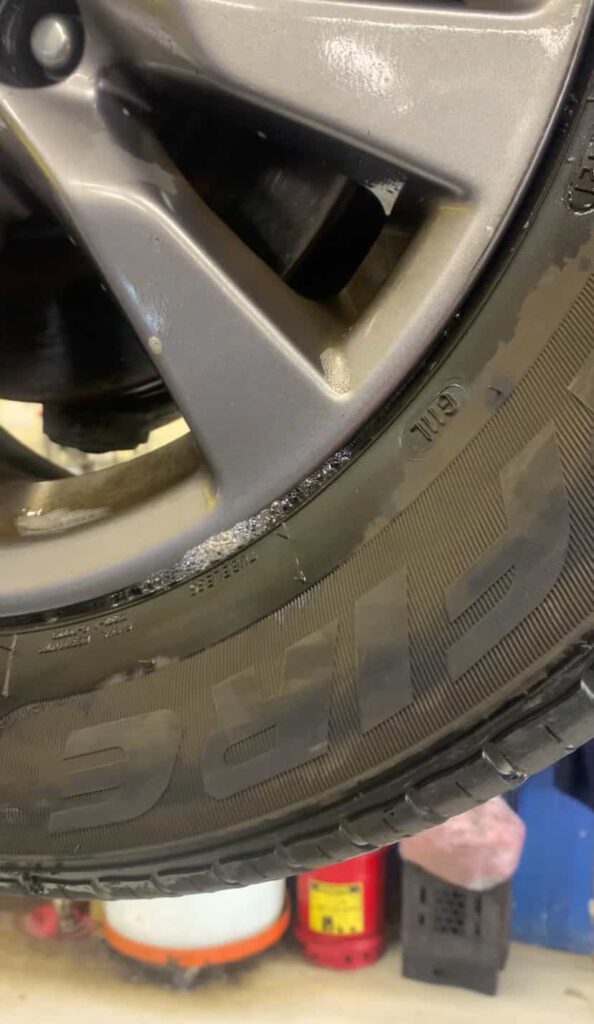
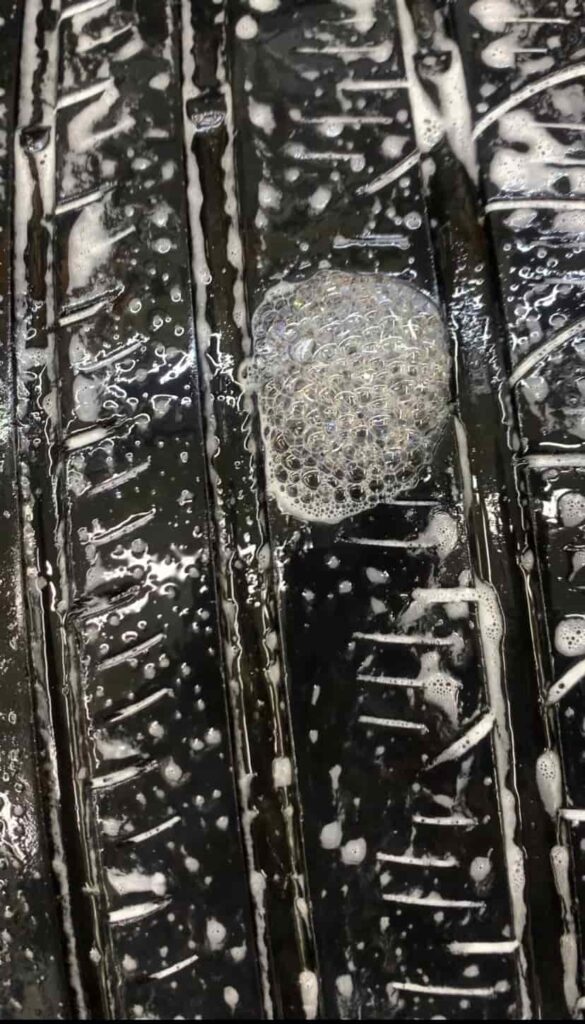
How to Reboot Your Chevy Camaro ECU by Disconnecting the Battery
When the TPMS reset and sensor relearning methods don’t switch off the Chevy Camaro’s low tire pressure indicator, disconnecting the car’s main 12-volt battery can help by deleting temporary TPMS error codes from the ECM.
First, turn off the engine and all electrical components (including the radio and lights).
Unfasten and detach the negative battery terminal.
After a short wait, reconnect and tighten the terminal on the battery.
These three steps should deactivate the low tire pressure light. If it illuminates again during a drive, this suggests a defective tire pressure sensor or a tire that is deflating.
The Impact of Tire Pressure on Fuel Efficiency
Ensuring correct tire pressure is vital for the Chevy Camaro’s fuel economy. It’s estimated that a 1 psi drop in a tire’s air pressure can decrease a vehicle’s gas mileage by about 0.2%. This means that tires that are underinflated by 5 psi could lead to a decrease in gas mileage of around 1%. This reduction can accumulate significant costs at the gas pump over time, along with heightened CO2 emissions impacting the environment.
Tire Repair With Tire Plugs
In my extensive career as an automotive technician, I regularly use tire plugs for fixing tire punctures. Tire plugs are a reliable long-term solution, but they shouldn’t be used on the sidewall of the tire or when the tire tread is entirely worn out. For larger punctures it’s better to either replace the tire or resort to a tire patch.
Can Tire Sealants Cause Harm to Tire Pressure Monitoring Systems?
In emergencies, using tire sealants as a quick fix for a leaky tire can be effective. Keep in mind that these sealants are generally liquid and may risk damaging the electronic components of the tire pressure sensor in the affected tire. After applying a tire sealant, it is advisable to have the tire pressure sensors tested.
Everything in this article is applicable to all Chevrolet Camaro models and versions including the Chevy Camaro LT1, 2LT, 3LT, 1SS, 2SS, and ZL1.
Please note that this blog post contains Amazon affiliate links. This means that if you make a purchase through one of these links, we at TPMSRESET.COM may earn a small commission at no extra cost to you. We only recommend products that we personally use and believe in. Thank you for supporting us.



